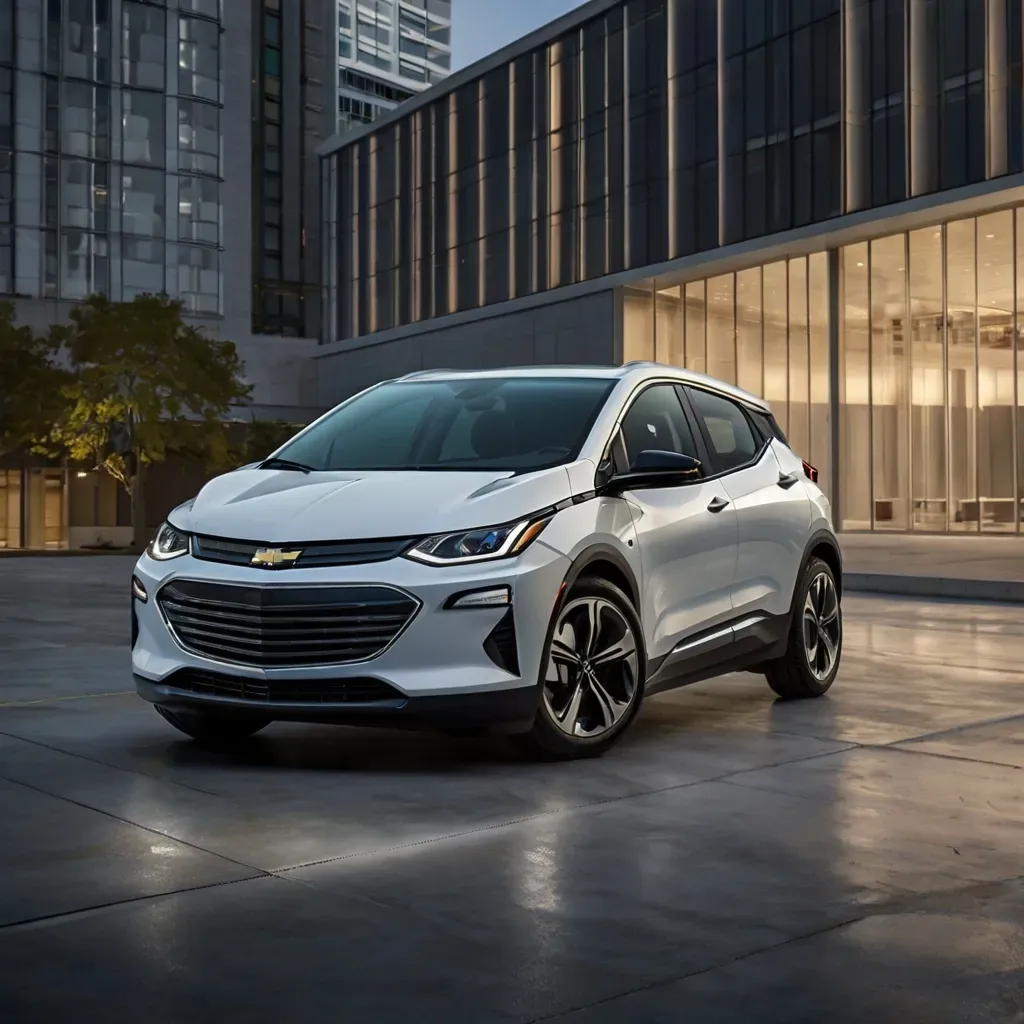General Motors’ EV strategy is poised to revolutionize its position in the competitive electric vehicle landscape. As the company seeks to position itself as a formidable challenger to Tesla, GM has proudly claimed the No. 2 spot in the U.S. EV market, showcasing a diverse array of electric models. With the EV market trends shifting in response to government policies and fluctuating consumer demand, GM has emphasized profitability by investing heavily in both electric and traditional vehicle production. This dual approach not only enhances their adaptability but also allows GM to capitalize on electric vehicle sales amidst changing market conditions. As automakers continue to adapt to the evolving landscape of the auto industry, GM’s strategic stance promises to influence future developments in electric mobility.
The evolution of General Motors’ electric vehicle approach is at the forefront of current automotive discussions. By declaring EVs as its guiding principle, GM aims to carve out a significant niche in the electric transportation sector. The company’s commitment to diversifying its vehicle offerings, encompassing both traditional combustion engines and innovative electric models, reflects a keen awareness of market demands and Tesla’s active competition. As the automotive industry navigates the complexities of consumer preferences and legislative changes, GM’s robust strategy is expected to drive notable shifts in the landscape of electric vehicle adoption. This strategic vision underlines GM’s belief in the profitable future of electric mobility, positioning the company as a leader in the fast-evolving world of sustainable transportation.
General Motors EV Strategy: Leading the Charge
General Motors has carefully crafted its electric vehicle (EV) strategy, positioning EVs as its ‘North Star.’ With a robust plan focusing on sustainability, profitability, and innovation, GM aims to bridge the gap with Tesla, the current leader in the EV market. By leveraging its extensive portfolio which includes diverse gas and electric models, GM is not just following trends but actively shaping them. The company aims to make significant inroads in a market where EV demand continuously shifts due to external factors such as tax legislation and consumer preferences.
The inherent advantages of GM’s strategy lie in its production flexibility and comprehensive vehicle lineup. By investing heavily in its manufacturing capabilities, GM has prepared to pivot as needed between EV and gasoline-powered vehicles to accommodate evolving market demands. As CFO Paul Jacobson mentioned, this flexibility is not merely a response to demand but a strategic approach to strengthen their market position against competitors like Tesla, ensuring that they maintain profitability even during uncertain market conditions.
Navigating EV Market Trends
The current landscape of the EV market is characterized by fluctuating demands and changing consumer preferences. Recent statistics indicate a slight decline in new EV sales, attributed to alterations in tax credits instituted by the government. This has led to a cautious approach among buyers, as seen in the latest reports showing a decrease in EV sales during the second quarter of 2025. This dynamic has forced automakers, including GM and Tesla, to adapt their strategies promptly to maintain sales momentum.
In light of these challenges, GM’s analysis of the EV market trends emphasizes a dual strategy where both EV and internal combustion engine vehicles coexist. This approach not only ensures production efficiency but also caters to a broader audience who may still depend on gasoline-powered vehicles while exploring electric options. By maintaining a nuanced understanding of the market dynamics, GM is well-positioned to capitalize on trends and maximize its electric vehicle sales over time.
Competition in the EV Landscape: GM vs. Tesla
Tesla’s dominance in the U.S. electric vehicle market presents both a challenge and a benchmark for General Motors. While Tesla has an established reputation for innovation and capability, GM’s recent achievements in EV sales demonstrate that competition is intensifying. Reports indicate that while Tesla saw a decline in vehicle deliveries, GM has more than doubled its EV sales year-over-year, which reflects a significant shift in the competitive landscape. This shift is crucial as GM continues to unveil more electric models, reinforcing its commitment to the EV market.
GM’s strategic moves, including significant investments in production facilities and a diverse lineup of 12 EV models, allow it to adapt swiftly to the competitive pressures posed by Tesla. By focusing on areas where Tesla may be vulnerable, such as fluctuating demand tied to market dependencies, GM is adjusting its tactics to steal market share. The narrative of competition in the EV space is not just about sales numbers but also revolves around how each company approaches consumer needs and market challenges.
Electric Vehicle Sales Trends and Future Projections
In evaluating electric vehicle sales trends, it’s critical to recognize the current landscape’s volatility. Currently, EV sales experienced a slight downturn, with new registrations decreasing by 6.3% year-on-year as of mid-2025. However, this situation is compounded by pending legislative changes that will alter the tax credit landscape. Analysts anticipate a rush in sales before these changes take effect, which could lead to a spike in electric vehicle deliveries in the third quarter of 2025.
Looking into the future, projections indicate that despite the temporary decline, the overall demand for electric vehicles is expected to rebound as consumer awareness and interest in sustainable transportation grow. GM’s proactive strategy and their commitment to increasing production capacity could ensure that they harness this growing demand effectively. The expectation is for GM to leverage its production flexibility, allowing for increased sales volume as consumer sentiment shifts back towards electric vehicles.
The Impact of Legislation on EV Sales
Recent legislation changes proposed by the government have had a significant impact on the electric vehicle market, particularly influencing sales and buyer behavior. The elimination of substantial tax incentives has created uncertainty and hesitation among potential buyers, as they weigh the long-term benefits of investing in electric vehicles versus traditional gas-powered options. Such changes have forced automakers, including General Motors, to rethink their marketing strategies and sales forecasts.“
Understanding the impact of these legislative changes is essential for GM as they navigate through this period of adaptation. The withdrawal of tax credits may lead to temporary sales declines but could also open opportunities for automakers that innovate and provide value to consumers in other ways. GM’s strategy hinges not only on the production of EVs but also on building confidence among consumers that electric vehicles are a viable choice in a fluctuating economic and regulatory environment.
General Motors’ Growth in the EV Market
As General Motors expands its presence in the electric vehicle market, it has reported promising growth in EV sales. Recent data revealed that GM’s electric vehicle sales reached 46,300 units in the second quarter of 2025, representing more than a doubling of sales from the previous year. While this growth is still a small fraction of GM’s overall vehicle sales, it marks a significant achievement in their journey toward becoming a major player in the EV space.
This growth reflects GM’s commitment to innovation and its focus on meeting consumer demand amidst market fluctuations. Their strategy of offering a variety of electric models positions them favorably against competitors like Tesla, allowing consumers to choose based on preferences and practical needs. Currently, GM’s goal is to bolster this upward trend by continuing to enhance its manufacturing strategies and promoting its diverse lineup.
Market Resilience and Strategic Investments
In a rapidly changing automotive landscape, General Motors has made purposeful investments to cement its future in the EV market. The company’s commitment to investing $4 billion in U.S. manufacturing plants underscores its belief in the resilience and profitability of electric vehicles. This strategic focus not only aims to enhance production capabilities but also prepares GM to respond to evolving consumer preferences within the auto industry.
By diversifying their production capabilities between electric and internal combustion models, GM is poised to adapt to shifting market environments. This flexibility is essential in an arena characterized by changing consumer demand and external pressures, such as new government policies that may affect electric vehicle incentives. GM’s proactive investments ensure that they remain not only competitive but also leaders in shaping the future of electric vehicles.
Consumer Interest in Electric Vehicles: A Growing Trend
Consumer interest in electric vehicles has surged, reflecting a greater awareness and acceptance of environmental sustainability within the auto industry. As buyers increasingly seek out eco-friendly options, demand for electric vehicles continues to rise. This trend is further catalyzed by innovative marketing strategies by companies like General Motors, which highlight the efficiency and long-term benefits of EV ownership.
Several surveys suggest that consumers are becoming more informed about the advantages of electric vehicles, including lower operating costs and reduced environmental impact. This growing interest presents an opportunity for automakers to engage with potential buyers, educate them on the benefits of EVs, and boost sales. GM’s diversified electric lineup plays a significant role in catering to this increasing consumer demand and understanding of EVs.
The Future of Electric Vehicle Technology
The electric vehicle industry is on the precipice of significant technological advancements that promise to transform the automotive landscape. As companies like General Motors invest in research and development, innovations in battery technology, charging infrastructure, and autonomous driving are expected to enhance the appeal and practicality of electric vehicles. Such advancements could revolutionize consumer perceptions of EVs, making them even more attractive options for everyday use.
Discussing the future of electric vehicle technology also involves examining the competitive landscape, particularly in relation to established players like Tesla. With ongoing investments and innovations, GM aims to introduce cutting-edge technologies designed to meet consumer needs while also addressing environmental concerns. This forward-thinking approach not only ensures GM’s position in the evolving market but also significantly contributes to the long-term sustainability of the automotive industry.
Frequently Asked Questions
What is General Motors’ strategy regarding electric vehicles (EVs)?
General Motors (GM) has proclaimed electric vehicles as its ‘North Star,’ indicating a strong commitment to leading in the EV market. The company’s strategy focuses on producing a diverse lineup of both gas and electric models to adapt to changing consumer demands, positioning GM as the second-largest electric vehicle manufacturer in the U.S., just behind Tesla.
How does GM plan to compete with Tesla in the EV market?
GM plans to compete with Tesla by leveraging its inherent advantages, such as a broader range of vehicle options. According to GM CFO Paul Jacobson, this diversity in their lineup enables the company to better manage fluctuating demand for EVs, which can be volatile. Additionally, GM aims to enhance profitability in its electric vehicle sales and has invested significantly in manufacturing flexibility.
What trends are influencing the electric vehicle (EV) market according to GM?
GM notes that recent changes in legislation, particularly President Trump’s tax reforms, have intensified the shifting demand for electric vehicles. These reforms affect the appeal of EVs by eliminating tax credits, prompting a potential rush in sales before the changes take effect. As a result, GM anticipates strong sales trends in the near future despite recent declines.
How many electric vehicles does GM currently offer?
As of mid-2025, GM offers 12 electric vehicle models, which is significantly more than Tesla’s five. This extensive lineup is part of GM’s strategy to capitalize on diverse customer preferences and stabilize sales amidst variable market conditions.
What were GM’s electric vehicle sales figures in the second quarter of 2025?
In the second quarter of 2025, GM reported electric vehicle sales of 46,300 units, a substantial increase from 21,900 units sold in the same period the previous year. This growth underscores GM’s momentum in the EV market, contributing to the company’s strategic objectives in electric vehicle production.
How is GM addressing challenges in the EV market?
GM is addressing challenges in the electric vehicle market by investing significantly in manufacturing infrastructure, allowing for flexible production capabilities. This strategy enables GM to shift production between electric and combustion-engine vehicles to meet demand shifts, thus reducing the impact of any potential declines in EV sales.
What is the outlook for GM’s electric vehicle production?
GM maintains an optimistic outlook for its electric vehicle production, reaffirming its commitment as the EV market develops. CEO Mary Barra highlighted that despite slower-than-expected growth, GM views profitable electric vehicle production as a long-term goal and continues to invest heavily to sustain this vision.
What are the implications of tax credits on GM’s EV sales?
The elimination of tax credits for electric vehicles, as indicated by recent legislation, could have significant implications for GM’s EV sales. Analysts predict that there may be an initial rush to purchase before the tax incentives expire, but the long-term effect could slow down the growth trajectory for EV sales, compelling GM to adapt its strategies accordingly.
How does GM’s electric vehicle strategy reflect industry trends?
GM’s electric vehicle strategy reflects broader trends in the auto industry towards electrification and sustainability. Their focus on a diverse vehicle lineup as well as investments in infrastructure highlights a strategic shift in response to evolving consumer preferences for green technologies amid increasing competition, particularly from market leaders like Tesla.
| Key Point | Details |
|---|---|
| GM’s EV Market Position | GM claims the No. 2 spot in the EV market, emphasizing an inherent advantage due to a diversified vehicle lineup. |
| Focus on Profitability | GM is prioritizing profitability for EVs amid fluctuating demand, especially as U.S. tax legislation changes. |
| EV Lineup Comparison | GM offers 12 EV models compared to Tesla’s 5, allowing GM to better capitalize on varied market demands. |
| Impact of Tax Reforms | Upcoming tax reform will remove credits for EV purchases, influencing consumer behavior and sales predictions. |
| Investment in Flexibility | GM has invested in manufacturing flexibility, enabling a shift between EVs and combustion engine production as needed. |
| Sales Performance | GM’s EV sales in Q2 2025 were 46,300, a significant increase from the previous year, while Tesla faced a decline. |
Summary
General Motors EV strategy is centered on establishing a robust market presence against competitors like Tesla. With its commitment to a diverse lineup of electric vehicles, GM aims not only to maintain its No. 2 position in the EV market but also to ensure positive profitability as market dynamics change. The company’s strategic investments and adaptability in manufacturing highlight its long-term vision for electric vehicle production, believing that embracing flexibility will be key to thriving in the evolving automotive landscape.



